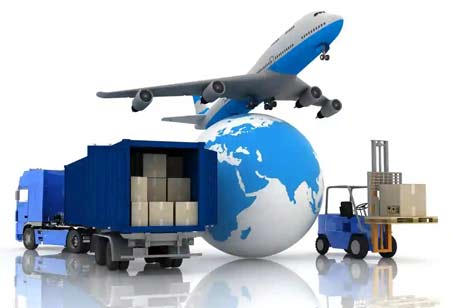THANK YOU FOR SUBSCRIBING
THANK YOU FOR SUBSCRIBING

By
Logistics Transportation Review | Wednesday, October 04, 2023
Stay ahead of the industry with exclusive feature stories on the top companies, expert insights and the latest news delivered straight to your inbox. Subscribe today.
This article examines various strategies for enhancing food safety and traceability.
Fremont, CA: To manufacture safe, wholesome food with a broader range of products and to gain the ability to trace products, and do all of this while boosting yield, enhancing throughput, and lowering giveaway, exploring specific aspects of food processing can help in doing that.
Some of those aspects include:
Improving the Shelf Life of the Products:
Every step matters when it comes to raw materials with a short shelf life.
Rapid movement of raw materials is required between various production regions and processes. Intelligent technology can significantly increase productivity and security in material handling and the rest of the system.
A setup that guarantees no touch between raw materials and the finished product and minor manual handling will minimize the danger of contamination, support food safety, assist products to stay fresher longer and keep their nutritional qualities. A quality control system that tracks performance and reacts swiftly to deviations can help you further increase efficiency.
Enhancing Quality Control:
Every bit of data matters in a sector where the highest standards must be met.
Quality control is essential in any food processing facility to maintain traceability, safety, and hygiene while satisfying regulatory requirements, client needs, and consumer desires.
A quality control software application enables users to improve the quality and worth of processes and goods by gathering and integrating quality control inspection data. Users will receive a quick, affordable quality assurance method with cross-correlation of several data streams that is entirely paperless and automated. Smart, data-driven processes can immediately handle quality issues, saving consumers from dealing with problems later on or after an order is finished.
Flexibility in Production and Ideal for Evolvement:
Whether it is for new features, products, or anything else, it matters no matter what the demand. A flexible food processing setup is designed to adapt to ongoing market changes. Flexibility is becoming increasingly in demand due to diverse product offerings, smaller series, shorter manufacturing runs, and hurried orders. Both predicting what to produce and ensuring dependable production can be aided by adaptable production lines and planning tools. Depending on the product being made, users of these tools will be able to react in real time to changes in demand or schedules and variations in raw material flows.
Users can boost production uptime and yield by reducing changeovers and enabling flexible scheduling by increasing agility. Users can study data in real-time and make quick, educated decisions to improve production processes if they integrate analysis software into processing.
Traceable Products:
Consumers' thirst for food-related knowledge is expanding. They are interested in all the specifics of their food. Traceability requirements of varying degrees are also necessary to adhere to general food laws and control standards. Technology that can effectively meet these objectives is constantly developing.
It may seem impossible to provide comprehensive product information for a single product. However, processors have a solid foundation of knowledge about food safety to meet this issue because of meticulous data gathering and cutting-edge tools to analyze the data. Thanks to a traceability engine integrated into the production process, users will be able to document each stage of a product's journey, from source to manufacture, processing, and distribution.
These are essential strategies to look for in improving food safety and traceability. Other elements include using the right food processing software to rectify inaccuracies, automating or digitizing various processes to reduce manual mistakes, and balancing between incoming materials and customer orders.
We must make every effort to produce food more sustainably if we want to change how it is processed. We wish to provide people worldwide with wholesome, reasonably priced food while preserving the environment and its finite resources.
I agree We use cookies on this website to enhance your user experience. By clicking any link on this page you are giving your consent for us to set cookies. More info





